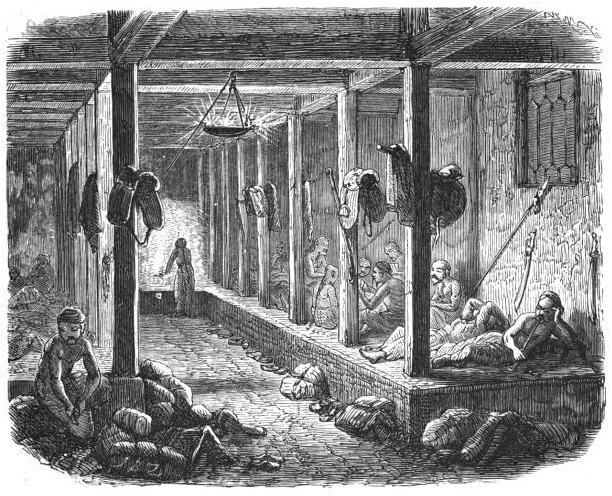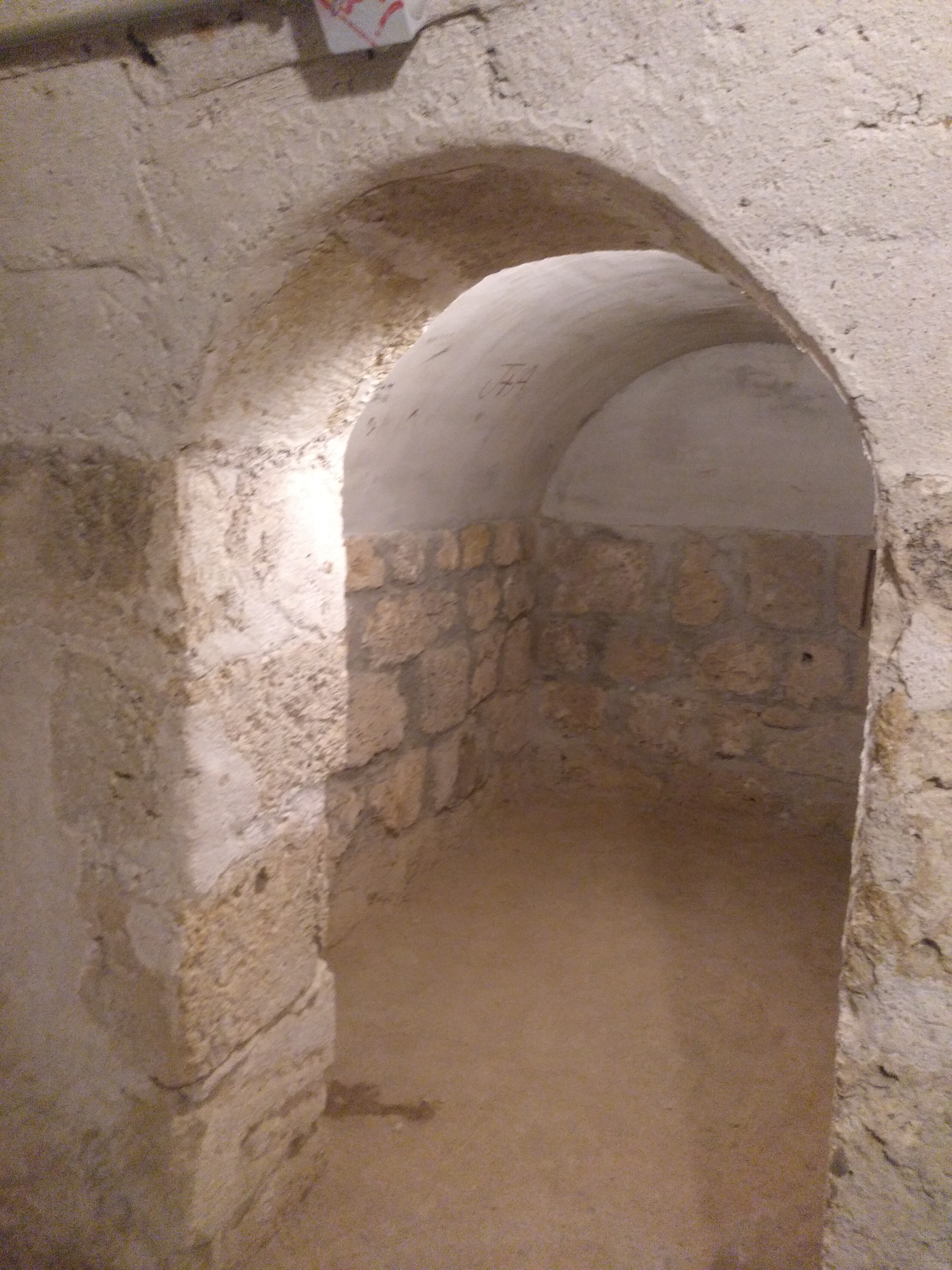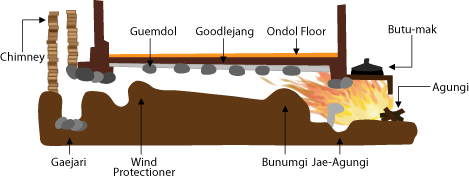|
Hypocaust
A hypocaust ( la, hypocaustum) is a system of central heating in a building that produces and circulates hot air below the floor of a room, and may also warm the walls with a series of pipes through which the hot air passes. This air can warm the upper floors as well. The word derives from the Ancient Greek meaning "under" and , meaning "burnt" (as in ''caustic''). The earliest reference to such a system suggests that the temple of Ephesus in 350 BC was heated in this manner, although Vitruvius attributes its invention to Sergius Orata in c. 80 BC. Its invention improved the hygiene and living conditions of citizens, and was a forerunner of modern central heating. Roman operation Hypocausts were used for heating hot baths and other public buildings in Ancient Rome. They were also used in private homes. It was a must for the villas of the wealthier merchant class throughout the Roman Empire. The ruins of Roman hypocausts have been found throughout Europe (for example in It ... [...More Info...] [...Related Items...] OR: [Wikipedia] [Google] [Baidu] |
Ancient Roman Architecture
Ancient Roman architecture adopted the external language of classical Greek architecture for the purposes of the ancient Romans, but was different from Greek buildings, becoming a new architectural style. The two styles are often considered one body of classical architecture. Roman architecture flourished in the Roman Republic and to even a greater extent under the Empire, when the great majority of surviving buildings were constructed. It used new materials, particularly Roman concrete, and newer technologies such as the arch and the dome to make buildings that were typically strong and well-engineered. Large numbers remain in some form across the former empire, sometimes complete and still in use to this day. Roman architecture covers the period from the establishment of the Roman Republic in 509 BC to about the 4th century AD, after which it becomes reclassified as Late Antique or Byzantine architecture. Few substantial examples survive from before about 100 BC, and most of ... [...More Info...] [...Related Items...] OR: [Wikipedia] [Google] [Baidu] |
Sergius Orata
Caius Sergius Orata (fl. c. 95 BC) was an Ancient Roman who was a successful merchant, inventor and hydraulic engineer. He is credited with inventing the cultivation of oysters and refinement to the hypocaust method of heating a building to provide in addition, heated water for bathing. Origins of his name The writer Festus noted "The Orata", the gilt headed bream, "is a kind of fish so called for its golden color (''aurata'', "golden," also spelled ''orata'')." ... "Because of this, it's said about the very wealthy Sergius that they called him ''orata'', because he wore two big rings of gold. Some authorities assert that his nickname just comes from the commercialization of those fishes." Biography Sergius was well known to his contemporaries for the breeding and commercialization of oysters, of which he was a noted innovator. Orata wanted to take advantage of the wealthy Romans' liking for shellfish as food, so he developed many new techniques for breeding oysters. This inc ... [...More Info...] [...Related Items...] OR: [Wikipedia] [Google] [Baidu] |
Kang Bed-stove
The ''kang'' (; Manchu: ''nahan'', kk, кән) is a traditional heated platform, 2 metres or more long, used for general living, working, entertaining and sleeping in the northern part of China, where the winter climate is cold. It is made of bricks or other forms of fired clay and more recently of concrete in some locations. The word ''kang'' means "to dry". Its interior cavity, leading to an often-convoluted flue system, channels the hot exhaust from a firewood/coal fireplace, usually the cooking fire from an adjacent room that serves as a kitchen, sometimes from a stove set below floor level. This allows a longer contact time between the exhaust (which still contains much heat from the combustion source) and (indirectly) the inside of the room, hence more heat transfer/recycling back into the room, effectively making it a ducted heating system similar to the Roman hypocaust. A separate stove may be used to control the amount of smoke circulating through the ''kang'', mai ... [...More Info...] [...Related Items...] OR: [Wikipedia] [Google] [Baidu] |
Vitruvius
Vitruvius (; c. 80–70 BC – after c. 15 BC) was a Roman architect and engineer during the 1st century BC, known for his multi-volume work entitled '' De architectura''. He originated the idea that all buildings should have three attributes: , , and ("strength", "utility", and "beauty"). These principles were later widely adopted in Roman architecture. His discussion of perfect proportion in architecture and the human body led to the famous Renaissance drawing of the '' Vitruvian Man'' by Leonardo da Vinci. Little is known about Vitruvius' life, but by his own descriptionDe Arch. Book 1, preface. section 2. he served as an artilleryman, the third class of arms in the Roman military offices. He probably served as a senior officer of artillery in charge of ''doctores ballistarum'' (artillery experts) and ''libratores'' who actually operated the machines. As an army engineer he specialized in the construction of '' ballista'' and '' scorpio'' artillery war machines for siege ... [...More Info...] [...Related Items...] OR: [Wikipedia] [Google] [Baidu] |
Kachelofen
A masonry heater (also called a masonry stove) is a device for warming an interior space through radiant heating, by capturing the heat from periodic burning of fuel (usually wood), and then radiating the heat at a fairly constant temperature for a long period. Masonry heaters covered in tile are called cocklestoves (also tile stoves or ceramic stoves). The technology has existed in different forms, from back into the Neoglacial and Neolithic periods. Archaeological digs have revealed excavations of ancient inhabitants utilizing hot smoke from fires in their subterranean dwellings, to radiate into the living spaces. These early forms have evolved into modern systems. Evidence found from 5,000 B.C. of massive blocks of masonry used to retain heat foreshadowed early forms of fire hearths that were used as multifunctional heating sources. Later evolutions came in the Roman ''hypocaust'' and Austro-German cocklestove (''Kachelofen'', literally "tile oven", or ''Steinofen'', "s ... [...More Info...] [...Related Items...] OR: [Wikipedia] [Google] [Baidu] |
Central Heating
A central heating system provides warmth to a number of spaces within a building from one main source of heat. It is a component of heating, ventilation, and air conditioning (short: HVAC) systems, which can both cool and warm interior spaces. A central heating system has a furnace that converts fuel or electricity to heat. The heat is circulated through the building either by fans forcing heated air through ducts, circulation of low-pressure steam to radiators in each heated room, or pumps that circulate hot water through room radiators. Primary energy sources may be fuels like coal or wood, oil, kerosene, natural gas, or electricity. Compared with systems such as fireplaces and wood stoves, a central heating plant offers improved uniformity of temperature control over a building, usually including automatic control of the furnace. Large homes or buildings may be divided into individually controllable zones with their own temperature controls. Automatic fuel (and sometimes ash ... [...More Info...] [...Related Items...] OR: [Wikipedia] [Google] [Baidu] |
Gloria (heating System)
{{More references, date=April 2010 Gloria (meaning ''glory'' in Spanish) was a central heating system used in Castile beginning in the Middle Ages. It was a direct descendant of the Roman hypocaust, and due to its slow rate of combustion, it allowed people to use smaller fuels such as hay instead of wood. Description The Gloria consisted of a firebox, generally located outside (in a courtyard, for example), which burned hay, and one or more ducts that ran under the floors of the rooms to be heated. The warm exhaust gases from the combustion would pass through these ducts and then be released outside through a vertical flue. The system is more efficient than a fireplace, because the rate of combustion (and therefore the heat output) can be regulated by restricting the airflow into the firebox. Moreover, the air required for combustion does not have to pass through the interior of the building, which reduces cold drafts. Finally, because the firebox is not open to the interior ... [...More Info...] [...Related Items...] OR: [Wikipedia] [Google] [Baidu] |
Hammam
A hammam ( ar, حمّام, translit=ḥammām, tr, hamam) or Turkish bath is a type of steam bath or a place of public bathing associated with the Islamic world. It is a prominent feature in the Islamic culture, culture of the Muslim world and was inherited from the model of the Culture of ancient Rome, Roman ''thermae.'' Muslim bathhouses or hammams were historically found across the Middle East, North Africa, al-Andalus (Islamic Spain and Portugal), Central Asia, the Indian subcontinent, and in Southeastern Europe under Ottoman Empire, Ottoman rule. A variation on the Muslim bathhouse, the Victorian Turkish bath, became popular as a form of therapy, a method of cleansing, and a place for relaxation during the Victorian era, rapidly spreading through the British Empire, the United States of America, and Western Europe. In Islamic cultures the significance of the hammam was both religious and civic: it provided for the needs of Ritual purification, ritual ablutions but also pro ... [...More Info...] [...Related Items...] OR: [Wikipedia] [Google] [Baidu] |
De Architectura
(''On architecture'', published as ''Ten Books on Architecture'') is a treatise on architecture written by the Roman architect and military engineer Marcus Vitruvius Pollio and dedicated to his patron, the emperor Caesar Augustus, as a guide for building projects. As the only treatise on architecture to survive from antiquity, it has been regarded since the Renaissance as the first book on architectural theory, as well as a major source on the canon of classical architecture. It contains a variety of information on Greek and Roman buildings, as well as prescriptions for the planning and design of military camps, cities, and structures both large (aqueducts, buildings, baths, harbours) and small (machines, measuring devices, instruments). Since Vitruvius published before the development of cross vaulting, domes, concrete, and other innovations associated with Imperial Roman architecture, his ten books give no information on these hallmarks of Roman building design and technolo ... [...More Info...] [...Related Items...] OR: [Wikipedia] [Google] [Baidu] |
Central Heating System
A central heating system provides warmth to a number of spaces within a building from one main source of heat. It is a component of heating, ventilation, and air conditioning (short: HVAC) systems, which can both cool and warm interior spaces. A central heating system has a furnace that converts fuel or electricity to heat. The heat is circulated through the building either by fans forcing heated air through ducts, circulation of low-pressure steam to radiators in each heated room, or pumps that circulate hot water through room radiators. Primary energy sources may be fuels like coal or wood, oil, kerosene, natural gas, or electricity. Compared with systems such as fireplaces and wood stoves, a central heating plant offers improved uniformity of temperature control over a building, usually including automatic control of the furnace. Large homes or buildings may be divided into individually controllable zones with their own temperature controls. Automatic fuel (and sometimes as ... [...More Info...] [...Related Items...] OR: [Wikipedia] [Google] [Baidu] |
Ondol
Ondol (; , Hangul: 온돌, 溫堗, ) or gudeul (Hangul: 구들, ) in Korean traditional architecture, is underfloor heating that uses direct heat transfer from wood smoke to heat the underside of a thick masonry floor. In modern usage it refers to any type of underfloor heating, or to a hotel or a sleeping room in Korean (as opposed to Western) style. The main components of the traditional ''ondol'' are an '' agungi'' (firebox or stove) accessible from an adjoining room (typically kitchen or master bedroom), a raised masonry floor underlain by horizontal smoke passages, and a vertical, freestanding chimney on the opposite exterior wall providing a draft. The heated floor, supported by stone piers or baffles to distribute the smoke, is covered by stone slabs, clay and an impervious layer such as oiled paper. History Origin Use of the ''ondol'' has been found at archaeological sites in present-day North Korea. A Neolithic Age archaeological site, circa 5000 BC, discovered i ... [...More Info...] [...Related Items...] OR: [Wikipedia] [Google] [Baidu] |
Combustion
Combustion, or burning, is a high-temperature exothermic redox chemical reaction between a fuel (the reductant) and an oxidant, usually atmospheric oxygen, that produces oxidized, often gaseous products, in a mixture termed as smoke. Combustion does not always result in fire, because a flame is only visible when substances undergoing combustion vaporize, but when it does, a flame is a characteristic indicator of the reaction. While the activation energy must be overcome to initiate combustion (e.g., using a lit match to light a fire), the heat from a flame may provide enough energy to make the reaction self-sustaining. Combustion is often a complicated sequence of elementary radical reactions. Solid fuels, such as wood and coal, first undergo endothermic pyrolysis to produce gaseous fuels whose combustion then supplies the heat required to produce more of them. Combustion is often hot enough that incandescent light in the form of either glowing or a flame is prod ... [...More Info...] [...Related Items...] OR: [Wikipedia] [Google] [Baidu] |










